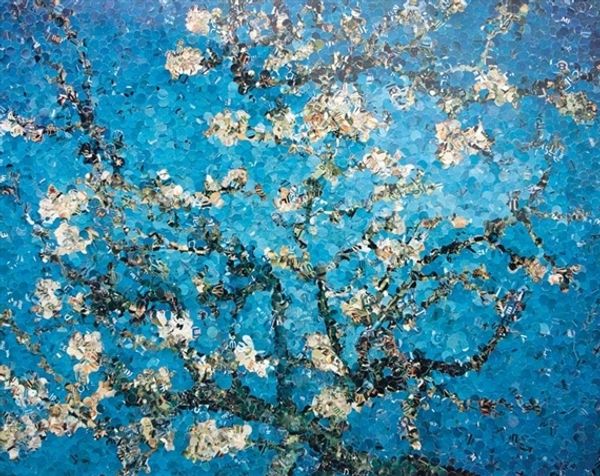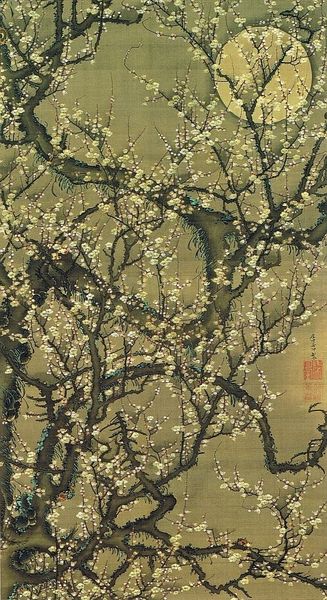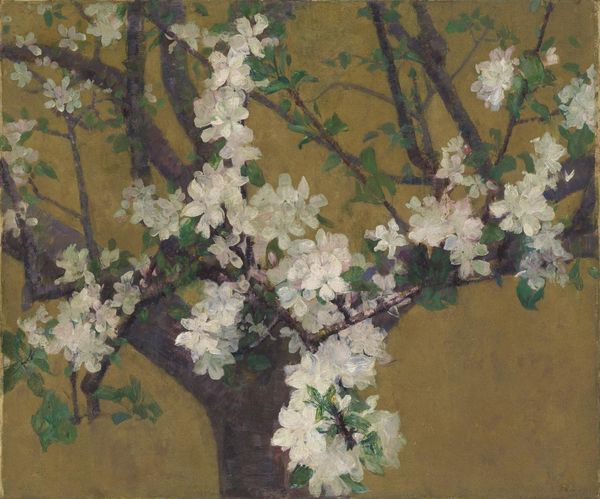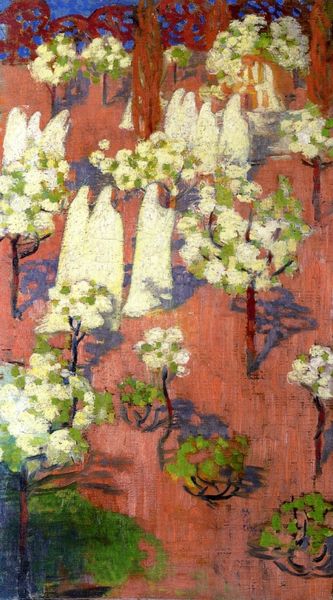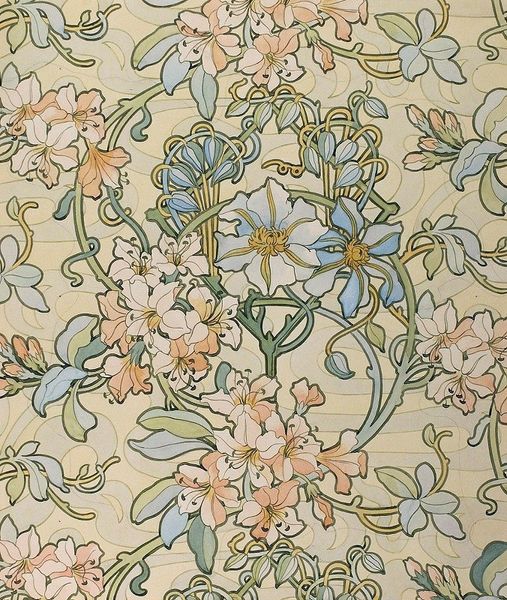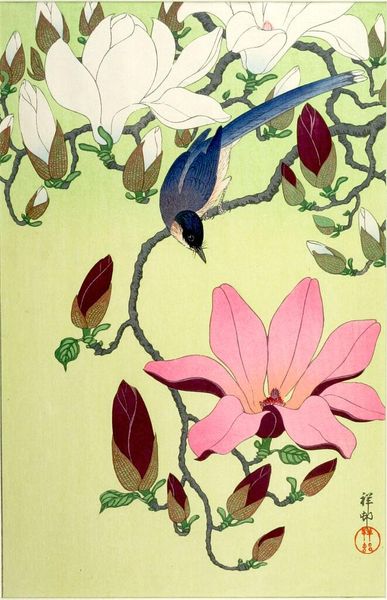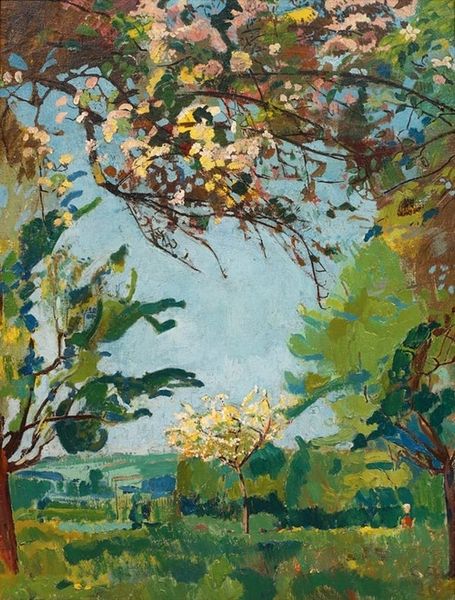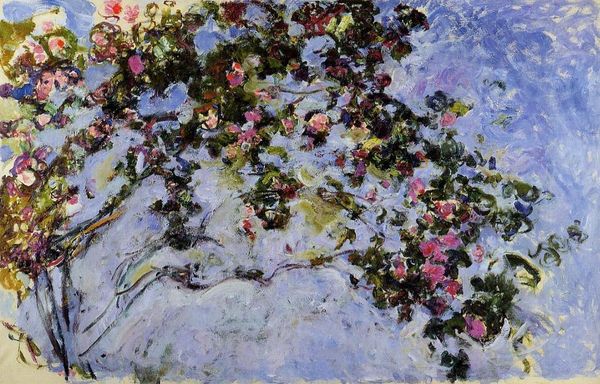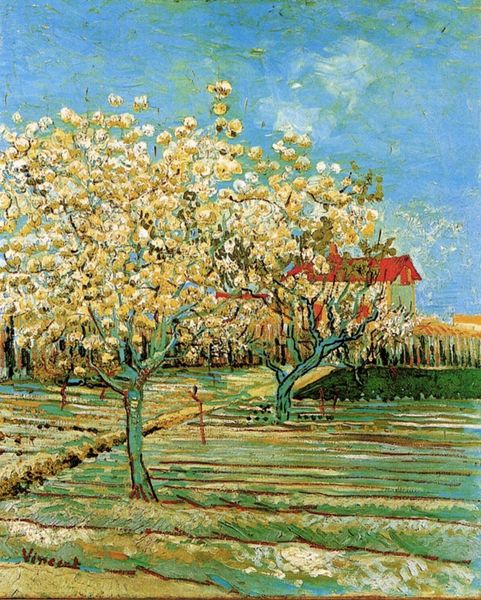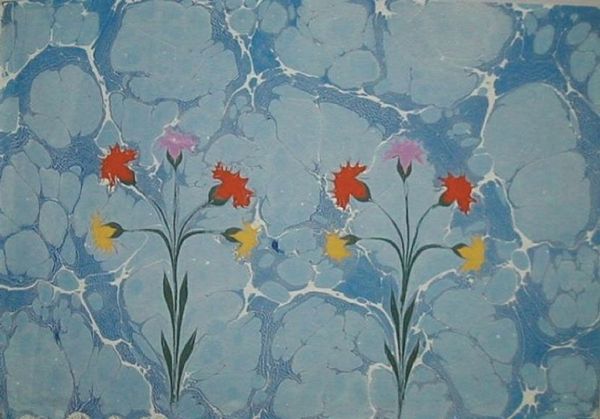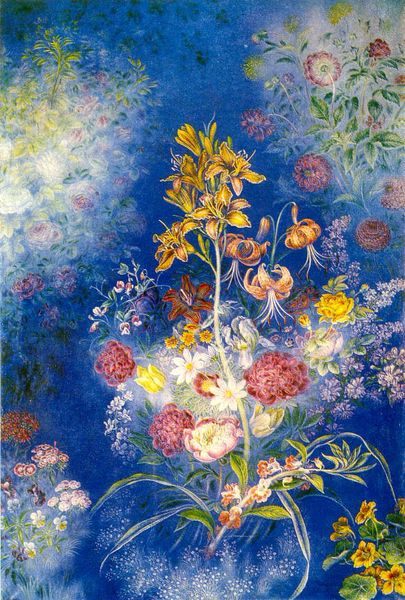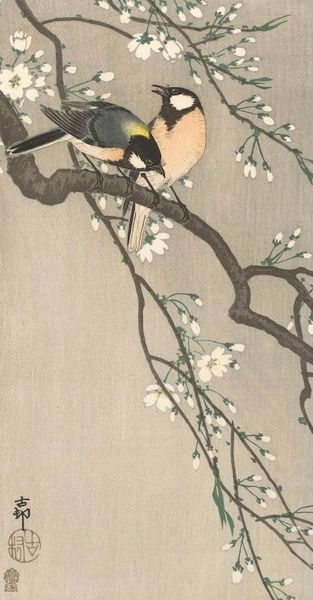
painting, oil-paint
#
tree
#
impressionist
#
organic
#
painting
#
impressionism
#
oil-paint
#
landscape
#
flower
#
impressionist landscape
#
plant
#
post-impressionism
#
expressionist
Dimensions: 92 x 73.5 cm
Copyright: Public domain
Editor: We’re looking at Van Gogh's "Branches with Almond Blossom," painted in 1890. The vibrant blues and delicate white blossoms create a hopeful mood, even though Van Gogh’s life was so troubled. I’m struck by its unusual composition, with the branches filling the entire canvas. What do you see in this piece? Curator: It's tempting to see this painting simply as a beautiful image of spring, but considering its historical and personal context adds a deeper layer. Commissioned by his brother Theo to celebrate the birth of his son, named Vincent, this painting takes on greater significance. Think about how this gift symbolizes hope and continuity within the frame of Van Gogh’s personal struggles. How might the choice of almond blossoms – which bloom early, even before the tree's leaves appear – speak to ideas about new beginnings and perseverance? Editor: So it was made to celebrate new life. I see that reflected in the blossoms breaking free from the branches and dominating the visual field. And, looking at how it departs from more traditional landscape painting, do you think the flattened perspective might connect to certain artistic circles at the time? Curator: Absolutely. Van Gogh was deeply interested in Japanese prints, known as Japonisme, during his time in Paris. His adoption of bold outlines, flattened perspective, and close-up view are the artist paying homage to Ukiyo-e. Given the significance of artistic circles, and the cultural interest in these prints, what statement might he be making by so boldly associating his piece with that movement? Editor: He's using a symbolic, life-affirming image that blends eastern and western traditions, and connects to intimate events and public artistic interests all at once. It really transforms how I see the piece. Curator: Indeed, recognizing these contextual layers helps us understand Van Gogh's sophisticated approach to painting, beyond his well-known expressive brushstrokes. This allows a deeper connection to his work and to understand its legacy.

